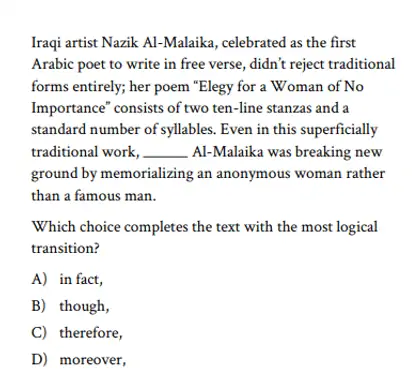The SAT is changing.
Beginning in March 2023, students outside the U.S. will be taking the digital SAT. Students within the U.S., on the other hand, will be switching over to the new testing format in March 2024.
Let’s start by talking about the similarities between the digital and paper-based tests. Both exams measure three core skills: reading, writing, and math. The top score remains 1600. Some question types look more-or-less the same across the tests—there have not been any significant changes with regard to math questions, for example.
Now for the differences. First, as you might have guessed, the digital SAT will be taken on a computer or tablet—currently Windows laptops, Mac OS laptops, Chromebooks and iPads are supported. Students should download the College Board’s official Bluebook app before test day to ensure that their devices are compatible.

The second big difference is that the digital SAT is adaptive, meaning that the difficulty of questions will change based on your performance. The test now consists of four “modules”—two “Reading & Writing” modules and two “Math” modules. If you do particularly well in the first “Reading & Writing” module, you can expect the next module to have more challenging questions. This adaptivity allows the College Board to determine your score more quickly, meaning that total testing time is just two hours on the digital SAT (compared with 3 hours for the paper-based SAT).

While the College Board hasn’t made any major changes to math questions, reading and writing questions can look quite different than they used to. Most significantly, there will no longer be any of the long (and hated) 750-word passages that were a staple of the reading test in the paper-based SAT. Instead, the digital test features short passages of approximately 150 words, each of which is associated with just one multiple-choice question.

The writing section has an increased emphasis on the correct use of transition words (e.g., “therefore,” “however,” and “moreover”). It also gives students very subtle punctuation placement questions. An entirely new type of question, called “rhetorical synthesis,” is also making an appearance on the digital test. These questions ask students to use information from a list of bullet points to achieve a particular goal.
Many students believe that the digital SAT is “watered-down”, “dumbed-down”, or “easy”. Frankly, they are dead wrong. I say that as an SAT tutor with 12 years of experience. First, the hard questions on the digital SAT are significantly harder than those on the paper-based SAT, especially since digital SAT questions often rely on critical reasoning skills. Next, the “curve” of the digital SAT is much stricter. From what I’ve seen so far, if you want a top score, you can not miss much more than one question per section.
For students who believe that the digital SAT will be a cakewalk, I recommend that they take a full-length digital practice test through Bluebook. I bet they’ll soon discover their digital SAT scores are lower than they expected.
The digital SAT presents a number of challenges for students who are trying to prepare for it. Currently, there are just 4 official digital practice tests, and we don’t know when College Board will release more. Worse still, there aren’t any good strategy guides that have been designed to help students with the digital SAT specifically. With a few notable exceptions, test prep materials tend to be generic and not tailored specifically to the digital SAT.
Still, there are some resources you can use. Erica Meltzer, who has a great series of workbooks and strategy guides for the paper-based SAT, has compiled a good list of resources on her website. For additional digital SAT practice, you can use short reading passages from old (pre-2016) SATs and PSATs, as well as short reading and critical reasoning questions from graduate-level exams like the GMAT, GRE, and LSAT.
The digital SAT is here to stay, so it’s important that you familiarize yourself with the test format and question types as soon as possible. Doing practice questions and taking full-length digital practice tests is the best way to prepare for the test.
Of course, SAT scores are just one component of the college application process. Here at RateMyApp, we offer comprehensive video reviews of your college application, so you know your chances—and how to improve them. Just click here to learn more.



